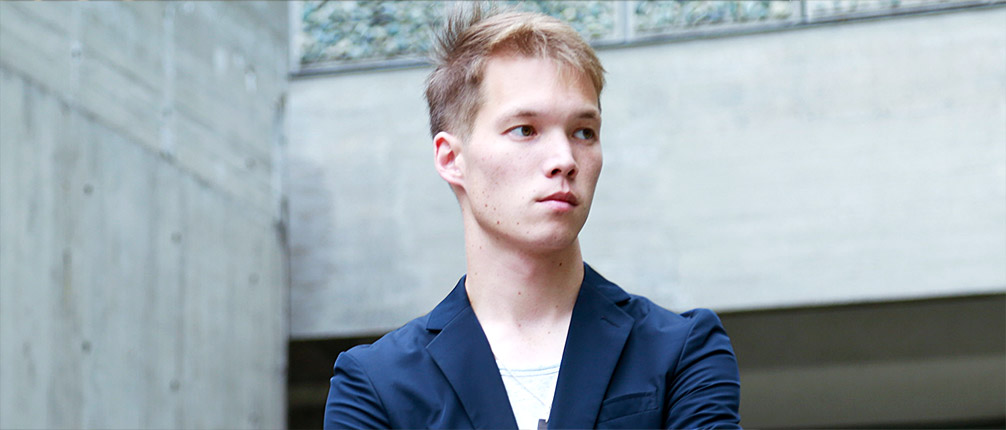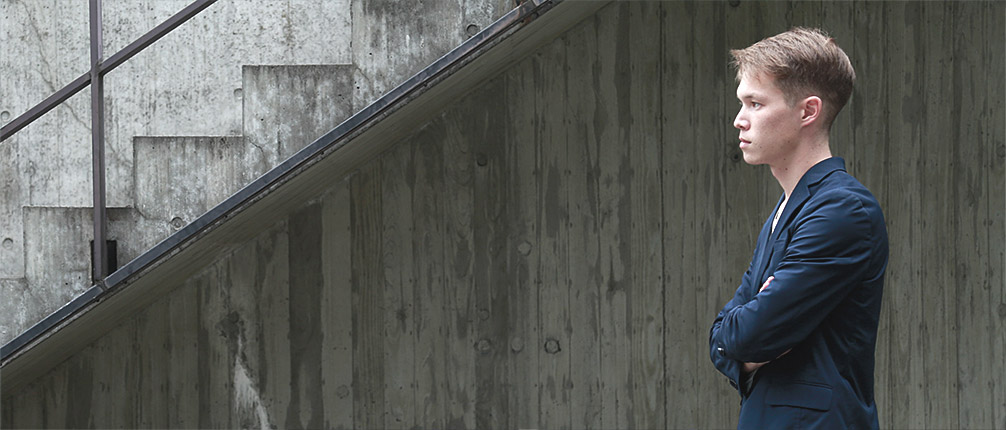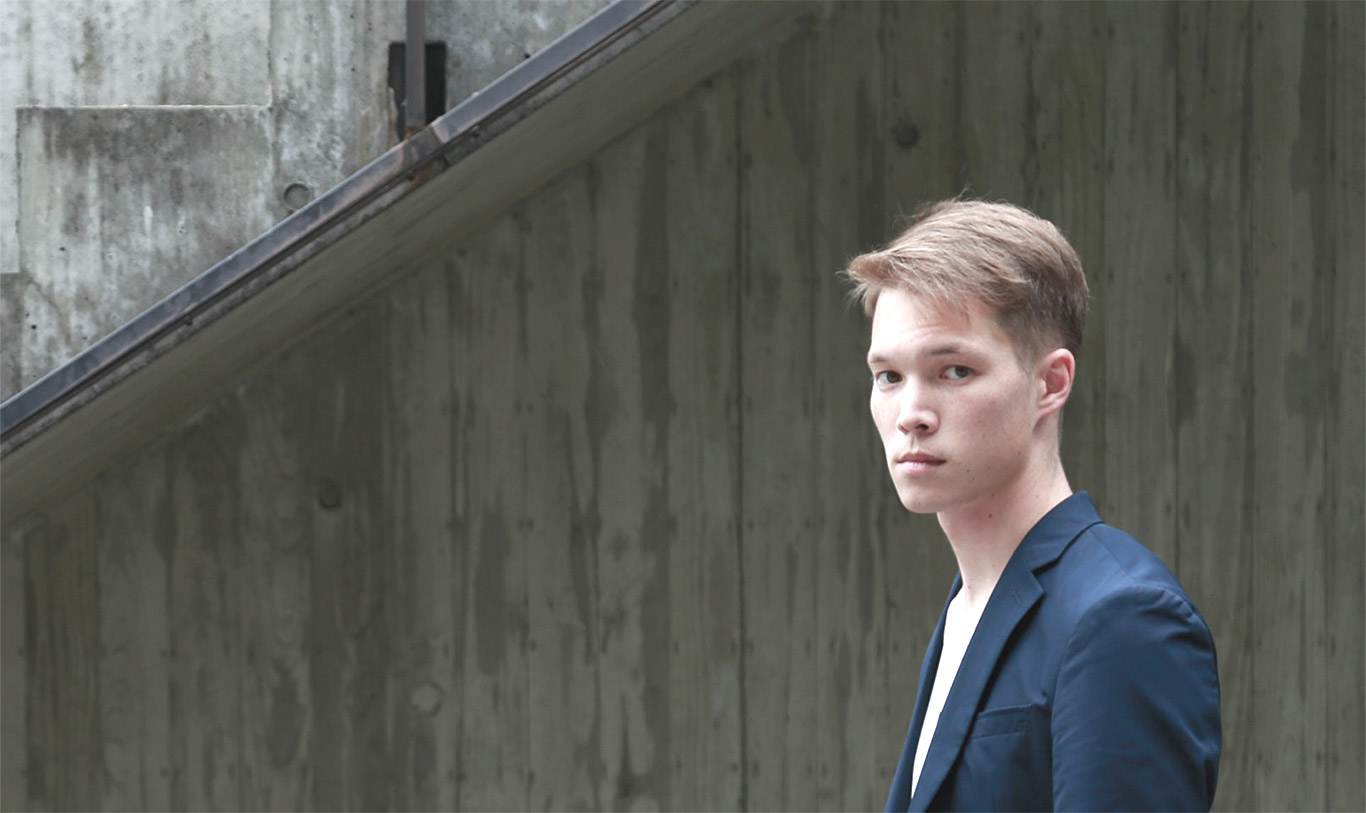PROFILE
- 2014
- イリノイ工科大学 建築学科
- 2015
- Kazuyo Sejima + Ryue Nishizawa / SANAA にて勤務
- 2016
- 株式会社ディー・サイン 入社
- 2014
- Illinois Institute of Technology Bachelor of Architecture
- 2015
- Employed by Kazuyo Sejima + Ryue Nishizawa / SANAA
- 2016
- Joined DE-SIGN INC.

-
デザインに興味を持ち始めたのはいつですか?
When did you first become interested in design?
-
幼い頃からアートは身近なものでした。祖父母がアートコレクターで、家中アート作品だらけ。今考えると、その影響は大きかったですね。また、日本生まれアメリカ育ちで、和と洋、両方のデザインに触れ、このギャップって何なのか?と激しく感じていました。
大学で建築を学びたいと思った切っ掛けは、高校でCAD(設計ソフト)の授業が面白かったからです。父がCADを使うエンジニアだったので同じ職業は避けたいと思い、他にCADを使う分野として建築設計を学び始めました。その後、建築設計を学んでいくうちに好きな建築家に出会えました。
I was surrounded by art as a child. My grandparents were art collectors, and the house was full of works of art. Thinking about it now, that had a major influence on me. Also, since I was born in Japan but raised in America, I had contact with both Japanese and Western design, and I was very interested in what it was that separated the two.
I was inspired to study architecture in college because of how interesting my computer-aided design (CAD) class was in high school. My father used CAD as an engineer, and since I wanted to try a different career I started studying architectural design because it was another field that used CAD. Later, as I learned about architecture I found some architects that I liked.
-
デザインを生業としてみて、仕事にする前と今では何が変わりましたか?
What has changed since before you tried to make a living on design?
-
好きな建築家のような作品を作ることに憧れていたけど、仕事にして感じたのは、時代は変化していて、現代におけるハードはソフトよりも影響が低いということ。特にオフィスシーンには、良いソフトのアイディアを導入することが必要なんです。ハードの知識だけでは、オフィスは創れない。今は出来上がったワークプレイスで、人がどう動き、その場をどう使われるのか、ワークスタイルも含めて考えられるのが面白いですね。
While I had longed to create works of architecture like those of my favorite architects, after I started working I realized that the times had changed, and today tangibles are less important than intangibles. Particularly for offices, it is essential to incorporate good ideas. You can’t build an office based solely on structural ideas. It’s interesting the way we can think about how people will move around the completed workplace, how it will be used, and people’s working styles.

-
ディー・サインに入って、今までと違いを感じたことはありますか?
Is there anything different you’ve noticed about DE-SIGN INC.?
-
最初の案の方向性を決めるまでの思考のスピードが速いことです。インテリアは建築物を建てるよりひとつひとつの案件のペースが速いから、思考にもスピードを求められるんだと思います。建築物の場合では1つの全工程を理解するまでに5~6年を要するものばかりで、一人前になるまでに長い年月が掛かるのが普通でした。早く経験を積みたいと思っていた自分に今の環境は合っていると思います。あとプロジェクト毎に要するお金や人、時間の実態をオープンにするなど、ひとつのプロジェクトにかかる収支を理解できる仕組みが実践されていることも興味深いと感じました。
The process through deciding on the course of action for an initial proposal moves very fast. Since the pace of designing each initial piece is faster for interiors than for buildings themselves, I think one needs to think fast too. In architecture it takes five to six years to understand a single process in its entirety, so usually it took a long time to become a true professional. I think my current environment is well suited to somebody like me who wants to amass various experiences quickly. I also found it very interesting the way systems are in place to help understand the revenues and expenditures on a single project, for example by openly sharing information on the funds, personnel, and time needed for each project.
-
得意としていることはありますか?
What are some of your specialties?
-
まず、日本語と英語の両方が使えることです。最近クライアントに「英語もうまいね」と褒められました。
そもそも、自分は両方の言葉をネイティブに話してきたので「変なこと言う人だな・・」って思いました(笑)。
あとは、建築的な考え方を用いて、色んな要件をバランスよく論理的に解決する方法を見出だすのが得意です。同じ問題をいろんな角度から考えて、頭の中でロジカルに答えを導いているから、相手に納得してもらえるのだと思います。
First, of all, I can use both Japanese and English. A recent client told me, “Your English is so good.”
I thought it was strange because both are native languages for me (laughs).
Also, I am good at finding logical solutions that balance various factors well, by using architectural ways of thinking. I think I am able to come up with convincing solutions by thinking about the same problem from various perspectives and working out logical answers.
-
これから、どんなことを手掛けてみたいですか?
What kinds of things would you like to work on in the future?
-
新しい何かを、今までにない変化を、創りたいといつも思っています。場所を使う人、もっと大きく言うと社会に大きな影響のあるものを創り、今の世の中を良くしていきたい気持ちが根本にあります。
そのためには世の中の非効率なものを改善すること、小さいけれども全体に変化を起こせるような、そんなものをデザインすることが必要なんだと思います。
そんな想いがあるから東京における高い人口密度の問題に興味があって、会社の仕事とは別に、もっとスペースを効率よく使うアイディアを友人と考えて試しています。
I think always about how I would like to build something new, incorporating changes never seen before. Basically I want to make the world a better place by building places that will have a major impact on those who use them and, in a broader sense, society at large.
To do so, I think there is a need to create designs that will improve inefficiencies, effecting small changes that impact the project as a whole.
For this reason, I am interested in Tokyo’s high population density, and separately from my work in the company I am trying to think of ideas for putting space to more efficient use with my friends.
MY WAY OF THINKING
オーダー通りにつくることが、目的をクリアできるとは限らない
Building something as ordered will not necessarily mean its objectives are achieved.
仕事のやり方としては、常にクライアントのオーダーをそのまま受け取るのではなく、なぜそのオーダーに至ったのかを考えるようにしています。オーダー通りに作ったとしても、プロジェクトの目的をクリアできるかはわからない。相手をより深く想像すれば、より深いレベルで相手のオーダーを理解できます。そこへ自分なりの変化を加えて、過去にはない、新しさを生み出したいと思っています。
In my work, instead of simply following clients’ orders exactly as presented I try to think about why they arrived at the decision of placing the order the way they did. It’s not clear that simply building something as ordered will mean its objectives are achieved. By trying to appreciate the other’s circumstances more deeply, one can understand their order at a deeper level. I want to create something brand new by changing it in my own ways.
OTHER INTERVIEW
-
PROJECT MANAGER
KOKI KIMURA
-
DESIGNER
KAZUSA NUMAO
-
DESIGNER
WATARU SATO
-
ASSISTANT DESIGNER
SHIHO YOSHIBA



